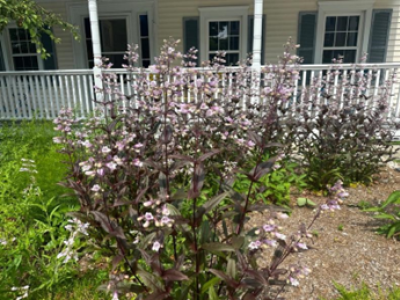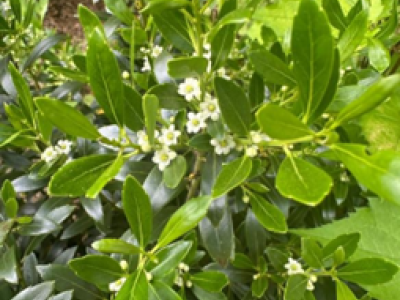
Welcome to the Bedford Hills Free Library Native Garden
You might be asking, “What is native gardening?”
It uses native plants in the landscape: these are plants that have evolved in our region, and which offer enormous benefits to our backyards, because they support biodiversity – that is, a range and volume of animal, insect and plant life.
Biodiversity is important and encouraged because it helps the environment be more resilient and better able to cope with the stresses of climate change. Biodiversity helps keep the ecosystem in balance. We want a variety of plants to support a variety of insects; we want the insects because they provide food for birds and so on up the food chain.
Native plants and trees provide habitat and food for local wildlife and attract pollinators to a garden, an essential component of a healthy ecosystem. This is becoming increasingly vital as we all begin to experience the effects of climate change and seasonal shifts.
Because these plants have evolved gradually and adapted over a period of years, they are well-suited to local conditions.
Native plants are adapted to local rainfall patterns, so they typically require less supplemental water than non-native plants.
Although small, this garden will be an oasis for nature, helping with habitat fragmentation in our suburban environment.
Our native garden isn’t just about the flowers. Take time to look for the pretty wild ginger (Asarum canadense) and the foamflower (Tiarella cordifolia) which have pretty leaf structure for season-long interest. These leaves, like all leaves of native plants, are also of interest to butterflies, moths and other insects which may need them as a host plant to lay their eggs, and always for safe cover.

Penstemon
First to bloom are the penstemon – a favorite of bumble bees. We have two varieties here – Penstamon Digitalis (Beardtongue “Dark Towers”) and Penstemon Hirsutus (Northeastern Beardtongue). Dark Towers is a cultivar, meaning it has been bred for specific features – it’s dark red leaves. Hirsutus is the straight – original – species and is a better plant for supporting insects.

Cone Flower
The first purple coneflower has opened up – a great pollinator plant and we expect to see several butterfly species paying it a visit. Echinacea purpurea. A great asset to any sunny garden, this also makes a great cut flower if you have a lot of them.

Anemone
The Canada anemone (Anenome canadensis) will be finishing up soon. We only have a few plants now, but this is one that will spread readily, especially in slightly moist, part shade.

Inkberry
Less showy but a close-up look at the inkberry shrubs (Ilex glabra) will reveal tiny delicate flowers, which tiny insect visitors appreciate. These will be fertilized by those visitors and turn into small glossy berries to be snapped up by migrating birds in the fall.
Switching Out the Lights
To further help our budding community of plants and insect life, the Bedford Hills Free Library is no longer uplighting the cherry tree. Night lights are very detrimental to insects, particularly moths, which are most important pollinators.
Want to Learn More?
Bedford Hills Free Library is proud to support Bedford 2030, Pollinator Pathway and Healthy Yards. Click on each name to explore websites.
To see the full list of the plants in our garden click here.
To see the garden design click here.
Bedford2030
Bedford 2030 addresses the urgent issue of climate change through the reduction of greenhouse gas emissions and preservation of natural resources.
Pollinator Pathway
What is a Pollinator Pathway? Public and private pesticide-free corridors of native plants that provide nutrition and habitat for pollinating insects and birds.